ART NEWS: Feb.01
 The exhibition “How I Learned About Non-Rational Logic” include works from the artist’s dingbats series of drawings made during the COVID-19 pandemic, a group of David Byrne’s tree drawings from the early 2000s, and a selection of his drawings of chairs from 2004–07. The drawings in Pace’s presentation shed light on Byrne’s distinct formal style and expansive visual arts practice. Throughout his five-decade-long career, Byrne has nurtured a fine arts practice spanning drawing, photography, installation, performance, and design. In 2008, he was commissioned by the nonprofit Creative Time to transform the interior of the Battery Maritime Building in Lower Manhattan—the exhibited work, titled Playing the Building (2005), comprises an immersive sound sculpture. The artist has also presented public installations at Pace Gallery in New York in 2011 and Saks Fifth Avenue in New York in 2002. Byrne often imbues his drawings with surreal, playful qualities. He has described his tree drawings, in which the artist labels the expansive branches and roots of trees with varied signifiers, as faux science, automatic writing, self-analysis, satire and maybe even a serious attempt at finding connections where none were thought to exist. And an excuse to draw plant-like forms and diagrams. Info: Pace Gallery, 540 West 25th Street, New York, NY, USA, Duration: 2/2-19/3/2022, Days & Hours: Tue-Sat 10:00-18:00, www.pacegallery.com
The exhibition “How I Learned About Non-Rational Logic” include works from the artist’s dingbats series of drawings made during the COVID-19 pandemic, a group of David Byrne’s tree drawings from the early 2000s, and a selection of his drawings of chairs from 2004–07. The drawings in Pace’s presentation shed light on Byrne’s distinct formal style and expansive visual arts practice. Throughout his five-decade-long career, Byrne has nurtured a fine arts practice spanning drawing, photography, installation, performance, and design. In 2008, he was commissioned by the nonprofit Creative Time to transform the interior of the Battery Maritime Building in Lower Manhattan—the exhibited work, titled Playing the Building (2005), comprises an immersive sound sculpture. The artist has also presented public installations at Pace Gallery in New York in 2011 and Saks Fifth Avenue in New York in 2002. Byrne often imbues his drawings with surreal, playful qualities. He has described his tree drawings, in which the artist labels the expansive branches and roots of trees with varied signifiers, as faux science, automatic writing, self-analysis, satire and maybe even a serious attempt at finding connections where none were thought to exist. And an excuse to draw plant-like forms and diagrams. Info: Pace Gallery, 540 West 25th Street, New York, NY, USA, Duration: 2/2-19/3/2022, Days & Hours: Tue-Sat 10:00-18:00, www.pacegallery.com
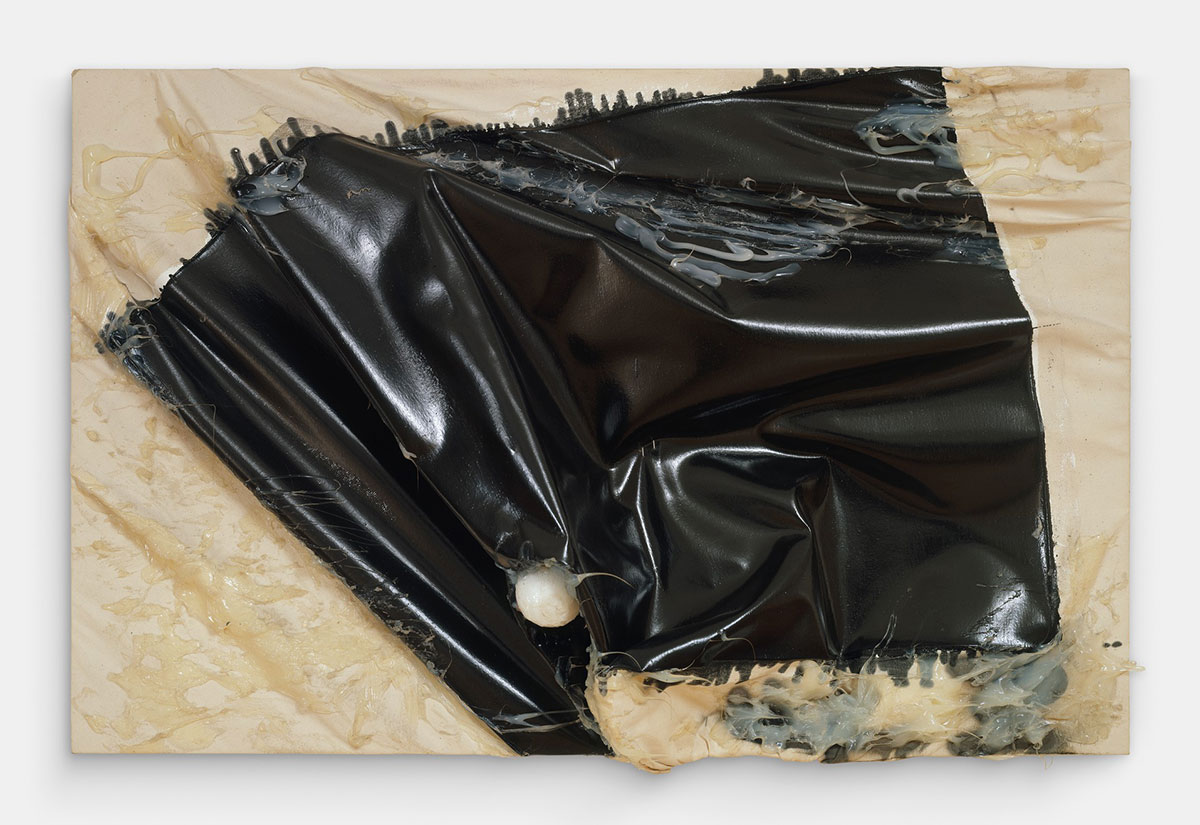 Steven Parrino’s solo exhibition features manipulated canvas paintings, works in sprayed enamel on vellum, and other works on paper. The works in the exhibition span Parrino’s brief but incendiary career, which was brought to an untimely end by his death in a motorcycle accident at the age of 46. Parrino often made his cultural and musical references more explicit in drawings and collages; among the artifacts and images featured here are stickers featuring the logo of experimental rock band Butthole Surfers and a reproduction of a drawing by the artist’s contemporary Raymond Pettibon that adorns the cover of Black Flag’s divisive 1984 album “My War”. Parrino pairs and juxtaposes these loaded cues and artifacts with sketches and studies for paintings, using graphite, ink, and tapeto stand in for the more substantive components of larger works. Elsewhere, by spraying enamel onto sheets of crumpled vellum, he allows the textures of the support to determine structure and detail, echoing earlier projects by Lucio Fontana and others, and anticipating contemporary undertakings. Info: Gagosian Gallery, Rheinsprung 1, Basel, Switzerland, Duration: 3/2-19/3/2022, Days & Hours: Tue-Sat 10;00-18:00, https://gagosian.com
Steven Parrino’s solo exhibition features manipulated canvas paintings, works in sprayed enamel on vellum, and other works on paper. The works in the exhibition span Parrino’s brief but incendiary career, which was brought to an untimely end by his death in a motorcycle accident at the age of 46. Parrino often made his cultural and musical references more explicit in drawings and collages; among the artifacts and images featured here are stickers featuring the logo of experimental rock band Butthole Surfers and a reproduction of a drawing by the artist’s contemporary Raymond Pettibon that adorns the cover of Black Flag’s divisive 1984 album “My War”. Parrino pairs and juxtaposes these loaded cues and artifacts with sketches and studies for paintings, using graphite, ink, and tapeto stand in for the more substantive components of larger works. Elsewhere, by spraying enamel onto sheets of crumpled vellum, he allows the textures of the support to determine structure and detail, echoing earlier projects by Lucio Fontana and others, and anticipating contemporary undertakings. Info: Gagosian Gallery, Rheinsprung 1, Basel, Switzerland, Duration: 3/2-19/3/2022, Days & Hours: Tue-Sat 10;00-18:00, https://gagosian.com
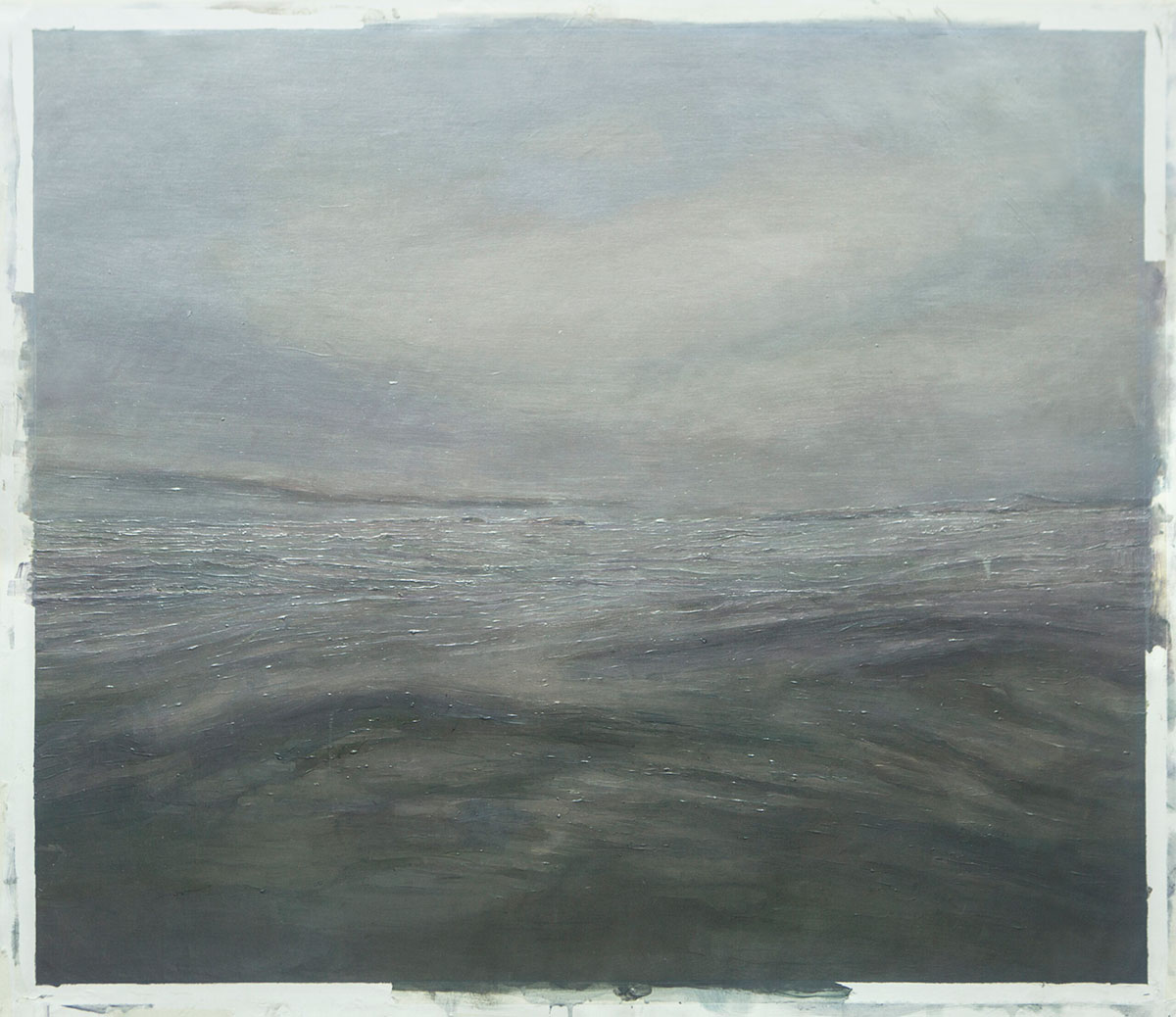 The Peruvian artist Giancarlo Scaglia presents his solo exhibition at Bernier/Eliades Gallery. He studied fine arts in Lima, where he developed his career as an artist. Scaglia’s work explores the relationship between history and memory, making reference to the armed conflicts from the 1980s and 1990s that took place in Peru. His interest in these events led him to question the origins of artistic avant-garde and to reflect on what it is that determines whether an action or gesture is considered “art”. Through his work, the artist examines that which no longer exists: the lives lost in those devastating conflicts and creates a “negative memorial” to commemorate the absence of collective memory, for the dead and the rule of law violated by the summary execution of many people. By giving tangible form to this void and creating a simulacrum of this absence, Scaglia memorializes and materializes a void that we cannot or will not see, but on which we inevitably stumble. Info: Bernier/Eliades Gallery, 11 Eptachalkou Street, Athens, Greece, Duration: 3/2-3/3/2022, Days & Hours: Mon-Fri 10:30-18:30, Sat 12:00-16:00, https://bernier-eliades.com/
The Peruvian artist Giancarlo Scaglia presents his solo exhibition at Bernier/Eliades Gallery. He studied fine arts in Lima, where he developed his career as an artist. Scaglia’s work explores the relationship between history and memory, making reference to the armed conflicts from the 1980s and 1990s that took place in Peru. His interest in these events led him to question the origins of artistic avant-garde and to reflect on what it is that determines whether an action or gesture is considered “art”. Through his work, the artist examines that which no longer exists: the lives lost in those devastating conflicts and creates a “negative memorial” to commemorate the absence of collective memory, for the dead and the rule of law violated by the summary execution of many people. By giving tangible form to this void and creating a simulacrum of this absence, Scaglia memorializes and materializes a void that we cannot or will not see, but on which we inevitably stumble. Info: Bernier/Eliades Gallery, 11 Eptachalkou Street, Athens, Greece, Duration: 3/2-3/3/2022, Days & Hours: Mon-Fri 10:30-18:30, Sat 12:00-16:00, https://bernier-eliades.com/
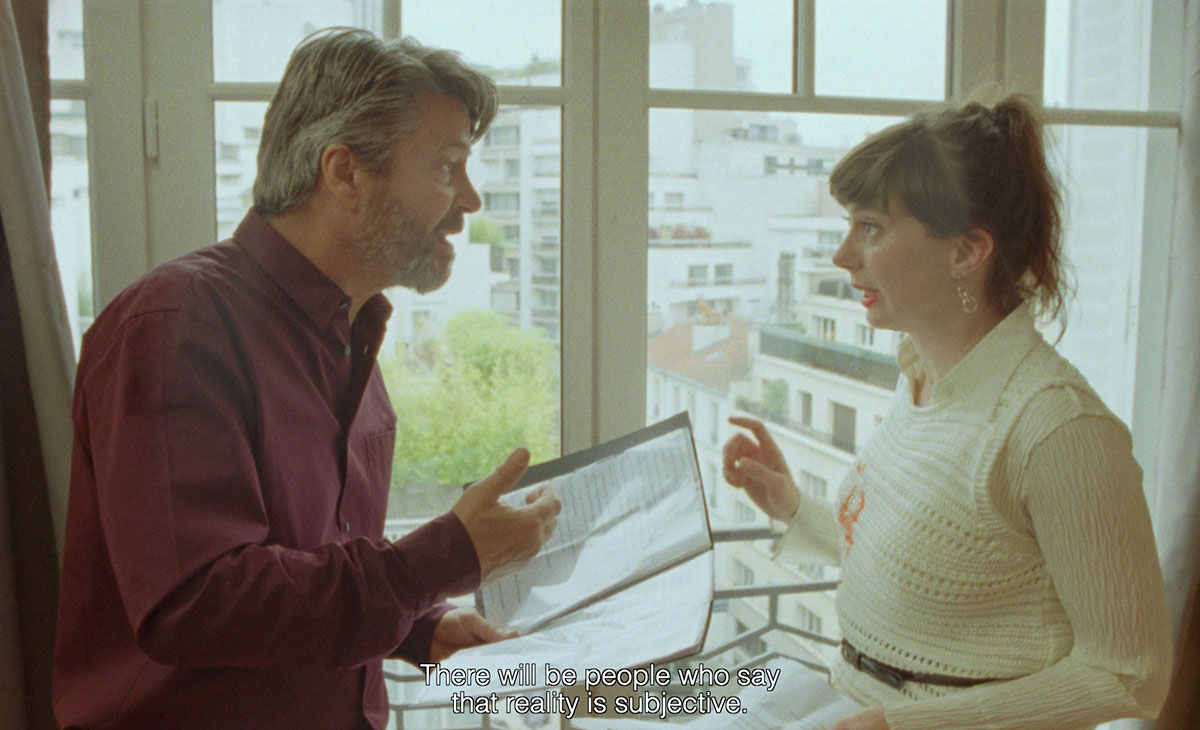 “Il y aura…” is a new film installation by Alice Theobald, a combination of multiple artistic forms is inherent to Theobald’s work and this new work brings together performance, film, installation and music. The film is inspired by Eugene Ionesco’s play “La Leçon”. In a Parisian apartment, a young woman arrives in an older man’s home for an ambiguous ritualised lesson. She is invited to read her ‘exercises’ and begins to nervously recite a series of phrases describing various scenes that ‘will be’ in the future. As the phrases become more surreal, the professor’s behaviour becomes more animated, erratic and sinister. This work has emerged from the artist’s personal experience as a bilingual Franco-British person brought up in the UK. Conflating fiction, personal experience and memory with a refusal to offer clear narrative resolutions, this film confronts intimate elements of her French heritage. Specifically, the film reflects on the artist’s experience of gradually losing her mother tongue all while remaining immersed in French film, literature, television and culture. Shot on 16mm and using handheld camera, the film has the aesthetic of a home movie, characteristic of Theobald’s previous performance video recorded works. Info: Curator: Anne-Sophie Dinant, Gaudel de Stampa, 49 Quai des Grands Augustins, Paris, France, Duration: 3-26/2/2022, Days & Hours: Wed-Sat 14:00-19:00, https://gaudeldestampa.fr
“Il y aura…” is a new film installation by Alice Theobald, a combination of multiple artistic forms is inherent to Theobald’s work and this new work brings together performance, film, installation and music. The film is inspired by Eugene Ionesco’s play “La Leçon”. In a Parisian apartment, a young woman arrives in an older man’s home for an ambiguous ritualised lesson. She is invited to read her ‘exercises’ and begins to nervously recite a series of phrases describing various scenes that ‘will be’ in the future. As the phrases become more surreal, the professor’s behaviour becomes more animated, erratic and sinister. This work has emerged from the artist’s personal experience as a bilingual Franco-British person brought up in the UK. Conflating fiction, personal experience and memory with a refusal to offer clear narrative resolutions, this film confronts intimate elements of her French heritage. Specifically, the film reflects on the artist’s experience of gradually losing her mother tongue all while remaining immersed in French film, literature, television and culture. Shot on 16mm and using handheld camera, the film has the aesthetic of a home movie, characteristic of Theobald’s previous performance video recorded works. Info: Curator: Anne-Sophie Dinant, Gaudel de Stampa, 49 Quai des Grands Augustins, Paris, France, Duration: 3-26/2/2022, Days & Hours: Wed-Sat 14:00-19:00, https://gaudeldestampa.fr
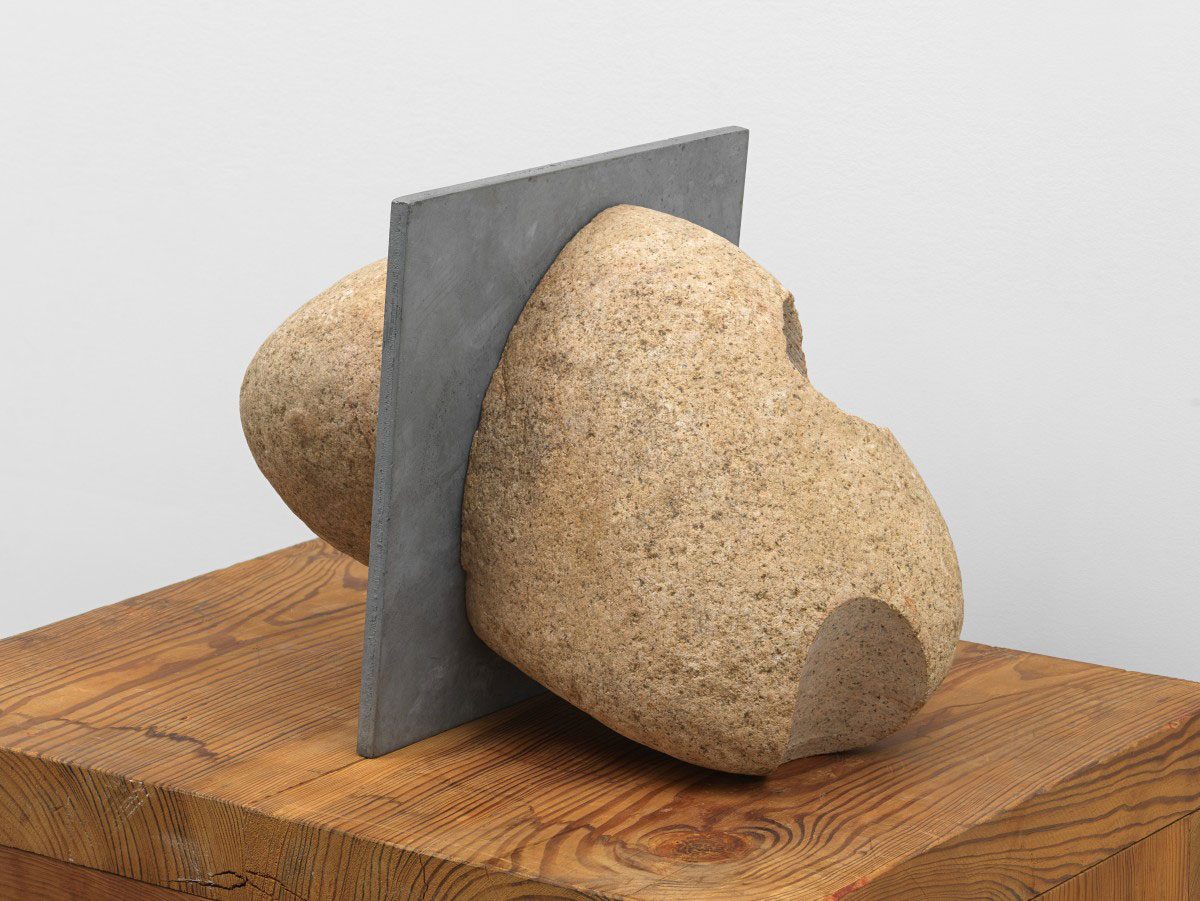 Titled “A New Nature”, the exhibition brings together several bodies of work by Isamu Noguchi that build organic environments from industrial methods and materials. Noguchi saw the standard museum pedestal as a false horizon, preferring to inspire empirical awareness and innate states of harmonisation – his own version of ecology. He encouraged us to understand ourselves – and everything we produce – as extensions of nature, rather than as defences against or challenges to it. ‘The nature of trees and grass is one thing. But there are many degrees of nature,’ he told a group of art students in San Francisco, 1970. Concrete can be nature. Interstellar spaces are also nature. There is human nature. In the city you have to have a new nature. Maybe you have to create that nature. Noguchi saw the job of sculpture as nothing less than the shaping of civic life, projecting a communal usefulness onto raw and machine-made materials. An advocate of real-world engagement, he promoted an accessible, integrated, one-world vision of art with a public purpose. Info: White Cube Gallery, 144 – 152 Bermondsey Street, London, United Kingdom, Duration: 4/2-3/4/2022, Days & Hours: Tue-Sat 10:00-18:00, Sun 12:00-18:00, www.whitecube.com
Titled “A New Nature”, the exhibition brings together several bodies of work by Isamu Noguchi that build organic environments from industrial methods and materials. Noguchi saw the standard museum pedestal as a false horizon, preferring to inspire empirical awareness and innate states of harmonisation – his own version of ecology. He encouraged us to understand ourselves – and everything we produce – as extensions of nature, rather than as defences against or challenges to it. ‘The nature of trees and grass is one thing. But there are many degrees of nature,’ he told a group of art students in San Francisco, 1970. Concrete can be nature. Interstellar spaces are also nature. There is human nature. In the city you have to have a new nature. Maybe you have to create that nature. Noguchi saw the job of sculpture as nothing less than the shaping of civic life, projecting a communal usefulness onto raw and machine-made materials. An advocate of real-world engagement, he promoted an accessible, integrated, one-world vision of art with a public purpose. Info: White Cube Gallery, 144 – 152 Bermondsey Street, London, United Kingdom, Duration: 4/2-3/4/2022, Days & Hours: Tue-Sat 10:00-18:00, Sun 12:00-18:00, www.whitecube.com
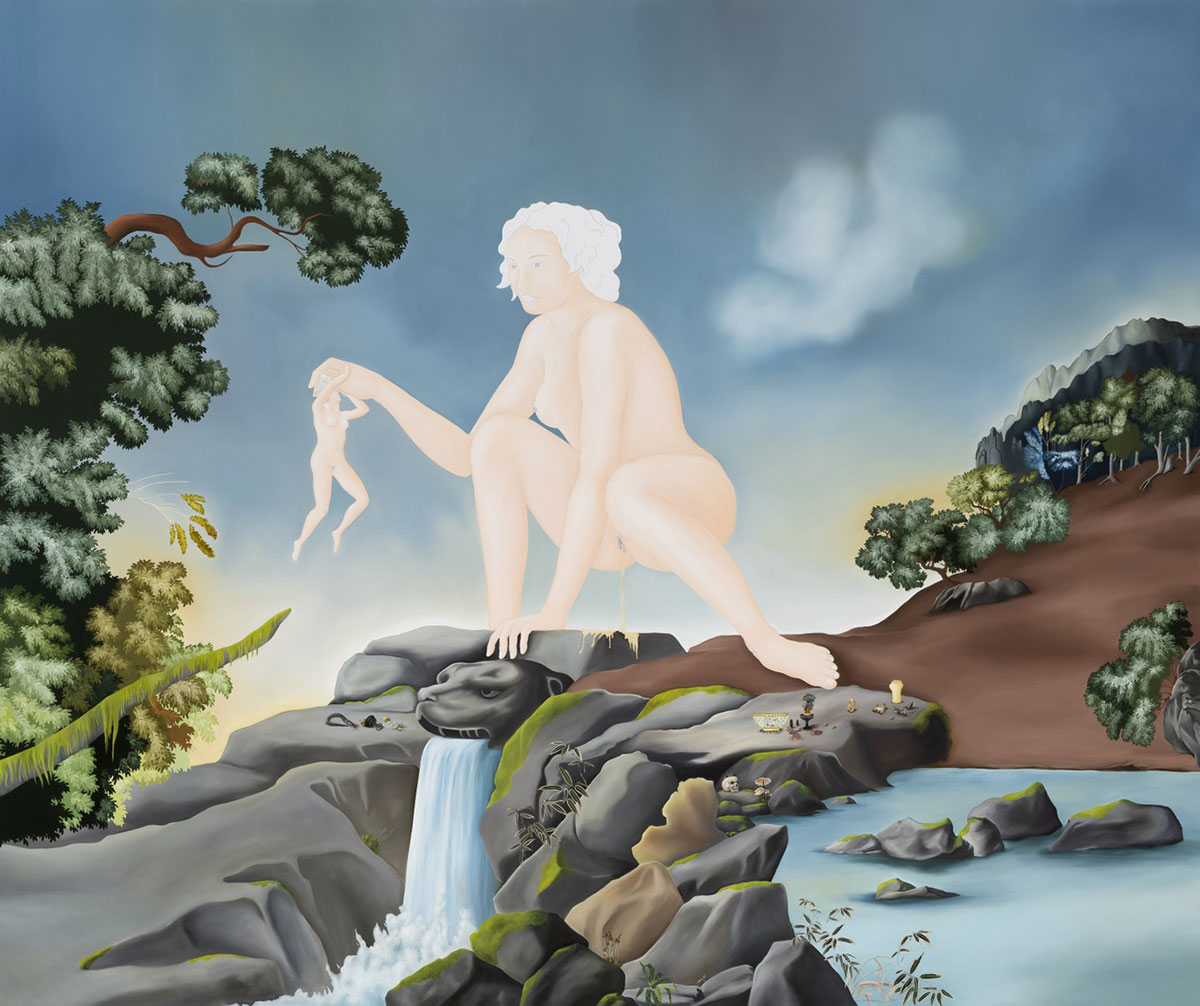 In the exhibition “Abrasive Paradise” twelve contemporary artists are invited to reflect upon the utopian ideal of a makeable world, within a world that turns out to be anything but makeable. In 2022, it is 150 years since Piet Mondriaan was born in Amersfoort. The starting point for the exhibition is his search for an ‘Earthly Paradise’: a modernist dream to build a perfect world based on form and style, in which people strive freely for the true, good and beautiful. In contemporary art, the ideal an engineered world seems to have faded into the background. Instead, there is reflection on the world and society. One hundred years after Mondriaan’s dream, our world seems anything but a paradise. Climate change, environmental pollution, viruses and mutual tension are palpable threats. Instead of conjuring up a utopia to be striven for, artists attempt to analyse the present state of affairs. By means of an experience they aim to draw the viewer’s attention to the reality in which we live. Does it still make sense to dream about an ‘Earthly Paradise’? Participating Artists: Armando, Sebastiaan Bremer, Sanam Khatibi, Maria Klabin, Friedrich Kunath, Simphiwe Ndzube, Erwin Olaf, Olphaert den Otter, Michael Raedecker, Marina Rheingantz, Rinus Van de Velde, Matthew Wong. Info: Kunsthal KAdE, Eemplein 77, (Eemhuis), Amersfoort, The Netherlands, Duration: 5/2-3/7/2021, Days Hours: Tue-sun 10:00-17:00, www.kunsthalkade.nl
In the exhibition “Abrasive Paradise” twelve contemporary artists are invited to reflect upon the utopian ideal of a makeable world, within a world that turns out to be anything but makeable. In 2022, it is 150 years since Piet Mondriaan was born in Amersfoort. The starting point for the exhibition is his search for an ‘Earthly Paradise’: a modernist dream to build a perfect world based on form and style, in which people strive freely for the true, good and beautiful. In contemporary art, the ideal an engineered world seems to have faded into the background. Instead, there is reflection on the world and society. One hundred years after Mondriaan’s dream, our world seems anything but a paradise. Climate change, environmental pollution, viruses and mutual tension are palpable threats. Instead of conjuring up a utopia to be striven for, artists attempt to analyse the present state of affairs. By means of an experience they aim to draw the viewer’s attention to the reality in which we live. Does it still make sense to dream about an ‘Earthly Paradise’? Participating Artists: Armando, Sebastiaan Bremer, Sanam Khatibi, Maria Klabin, Friedrich Kunath, Simphiwe Ndzube, Erwin Olaf, Olphaert den Otter, Michael Raedecker, Marina Rheingantz, Rinus Van de Velde, Matthew Wong. Info: Kunsthal KAdE, Eemplein 77, (Eemhuis), Amersfoort, The Netherlands, Duration: 5/2-3/7/2021, Days Hours: Tue-sun 10:00-17:00, www.kunsthalkade.nl
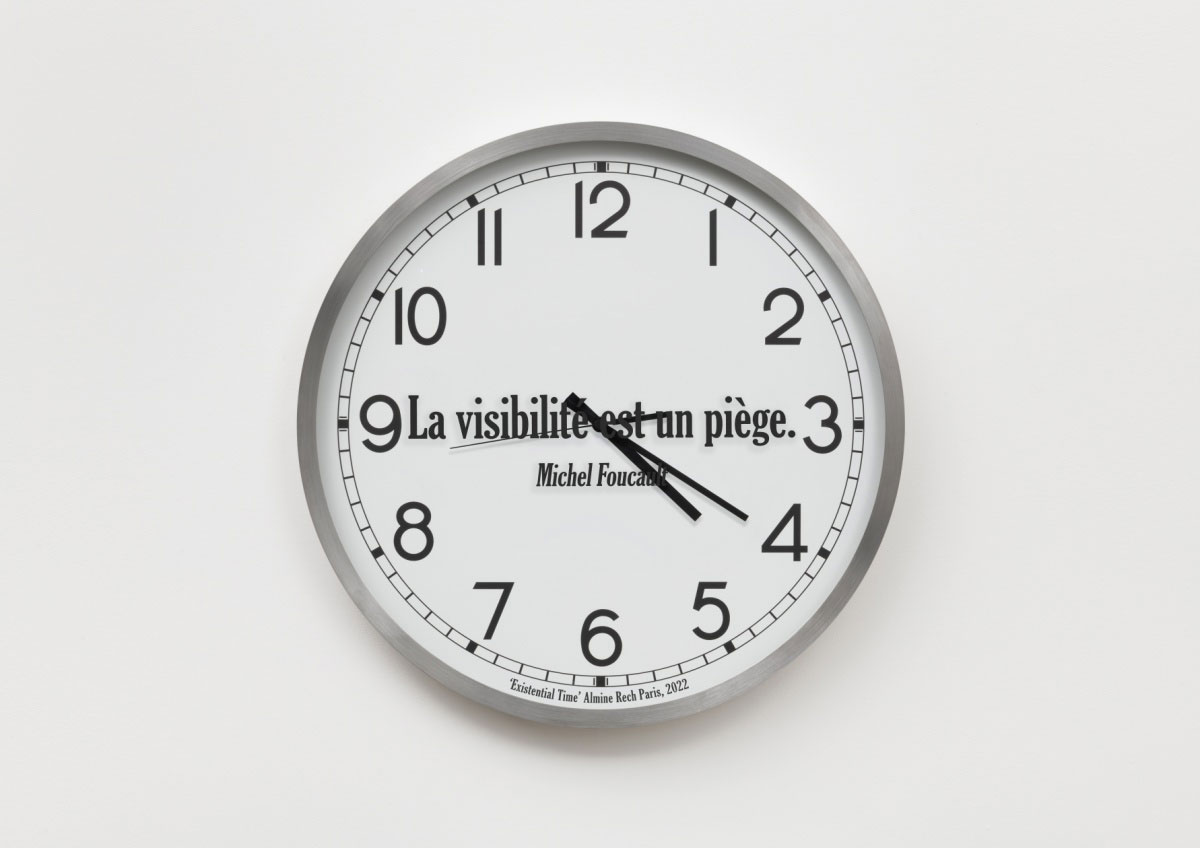 New works by Joseph Kosuth are on show in his solo exhibition “Existential Time”. Kosuth’s interest is in the meaning of time as we experience it within the array of contexts life provides. In the sixteen individual works titled “Quoted Clocks”, Kosuth’s use of the analog clock referentially anchors the concept of time to its most literal and familiar visual representation, serving as a canny reminder that time is contained in a clock no more than the complex process of making meaning in art is contained in a single object. However precise the mechanism, a clock functions visually as little more than a punctuation mark in need of a sentence, allowing those who look at it, collectively, individually, only a glimpse of a moment that never simply passes. By removing the clock as a fabricated object from its cultural context of functionality and then combining it with quoted language also taken from prior contexts, “Quoted Clocks”further punctuates the insufficiencies, limits, and surpluses of meaning that characterize our perceptions of duration. Info: Almine Rech Gallery, 64 Rue de Turenne (front space), Paris, France, Duration: 12/5-26/3/2022, Days & Hours: Tue-Sat 11:00-19:00, www.alminerech.com
New works by Joseph Kosuth are on show in his solo exhibition “Existential Time”. Kosuth’s interest is in the meaning of time as we experience it within the array of contexts life provides. In the sixteen individual works titled “Quoted Clocks”, Kosuth’s use of the analog clock referentially anchors the concept of time to its most literal and familiar visual representation, serving as a canny reminder that time is contained in a clock no more than the complex process of making meaning in art is contained in a single object. However precise the mechanism, a clock functions visually as little more than a punctuation mark in need of a sentence, allowing those who look at it, collectively, individually, only a glimpse of a moment that never simply passes. By removing the clock as a fabricated object from its cultural context of functionality and then combining it with quoted language also taken from prior contexts, “Quoted Clocks”further punctuates the insufficiencies, limits, and surpluses of meaning that characterize our perceptions of duration. Info: Almine Rech Gallery, 64 Rue de Turenne (front space), Paris, France, Duration: 12/5-26/3/2022, Days & Hours: Tue-Sat 11:00-19:00, www.alminerech.com
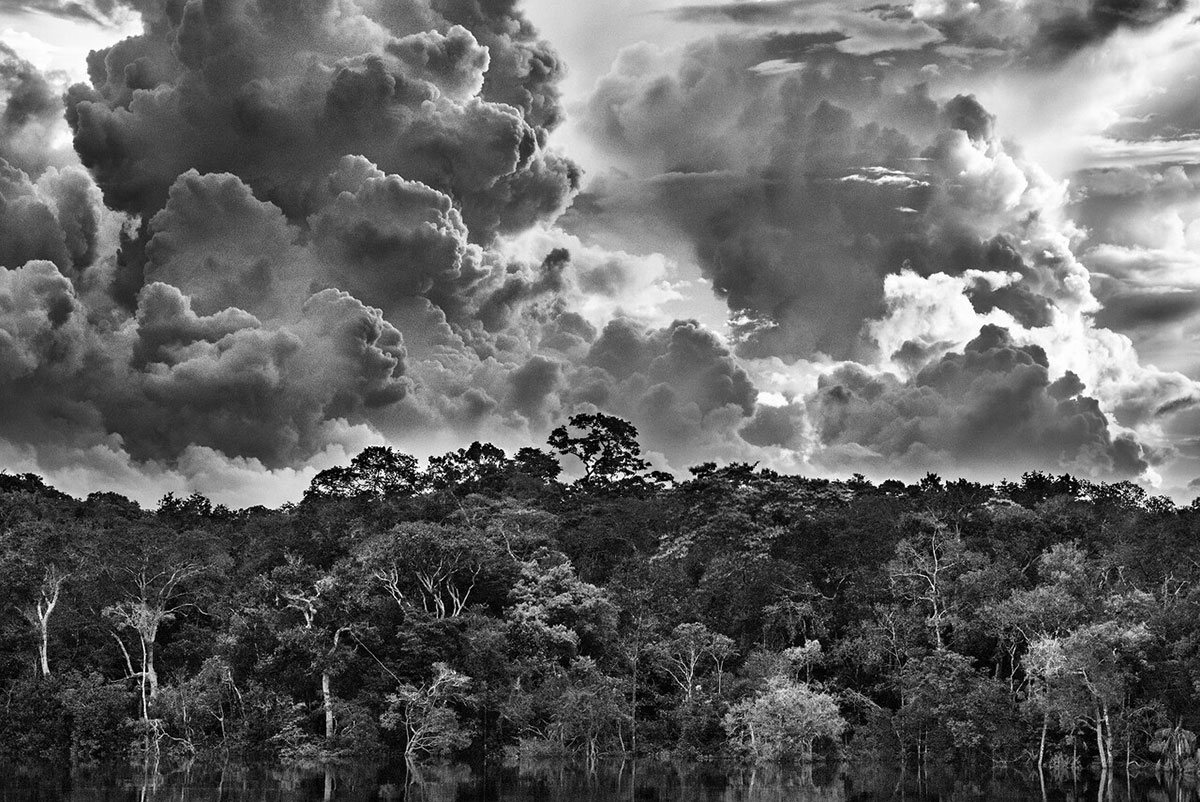 Besides the more than 200 photographs that portray teeming landscapes and the life of indigenous communities, Sebastião Salgado’s solo exhibition “Amazônia” features seven original video statements by indigenous leaders about the problems they face for their survival in the forest while warning about the urgency of actions to ensure its protection and preservation. From a local viewpoint, in Brazil we are currently witnessing a series of threats to the indigenous peoples coupled with the annulment of environmental protection initiatives and the deployment of policies that encourage the unrestricted exploitation of the subsoil and the occupation of land—previously protected—by agricultural and livestock raising activities of massive environmental impact. In this context, the exhibition is presented as a warning shout and a way of contributing to the debate on the future of one of the most threatened regions of the planet, a discussion that must be made in a broad perspective and with the participation of the inhabitants of the forest. Info: Curator: Lélia Wanick, Sesc Pompeia, Água Branca, R. Clélia 93, Sesc Brazil, São Paulo, Brazil, Duration: 15/2-10/7/2022, Days & Hours: Tue-Sat 10:00-22:00, Sun 10:00-19:00, www.sescsp.org.br
Besides the more than 200 photographs that portray teeming landscapes and the life of indigenous communities, Sebastião Salgado’s solo exhibition “Amazônia” features seven original video statements by indigenous leaders about the problems they face for their survival in the forest while warning about the urgency of actions to ensure its protection and preservation. From a local viewpoint, in Brazil we are currently witnessing a series of threats to the indigenous peoples coupled with the annulment of environmental protection initiatives and the deployment of policies that encourage the unrestricted exploitation of the subsoil and the occupation of land—previously protected—by agricultural and livestock raising activities of massive environmental impact. In this context, the exhibition is presented as a warning shout and a way of contributing to the debate on the future of one of the most threatened regions of the planet, a discussion that must be made in a broad perspective and with the participation of the inhabitants of the forest. Info: Curator: Lélia Wanick, Sesc Pompeia, Água Branca, R. Clélia 93, Sesc Brazil, São Paulo, Brazil, Duration: 15/2-10/7/2022, Days & Hours: Tue-Sat 10:00-22:00, Sun 10:00-19:00, www.sescsp.org.br
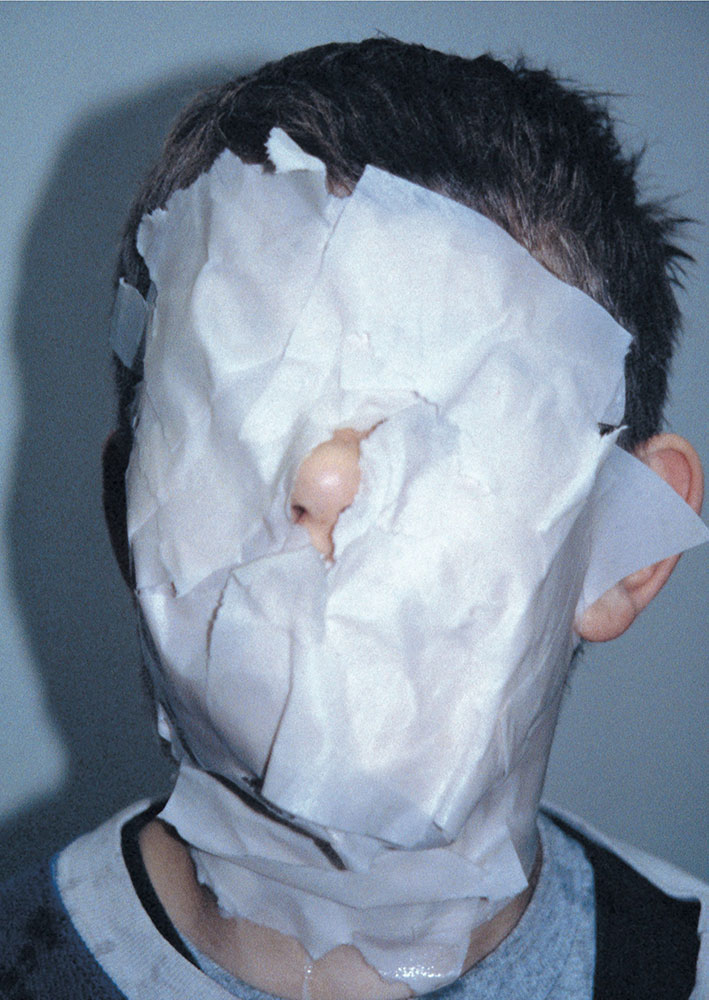 “Report 1964–2022” is Peter Friedl’s most extensive institutional survey in Germany to date. Adopting a variety of genres, media, and forms of display, Friedl’s works seek to explore the construction of history and the concepts within our political and aesthetical consciousness. His artistic practice is aimed at creating new models of narration in which time, permanent displacement, and critical intimacy all play a central role. Friedl often refers to and employs theatrical representation and poetics in his works (e.g., scale models, tableaux vivants, props, puppet theatre, restaging) to highlight hidden or overlooked mechanisms intrinsic to historiography, language, and cultural identities. Archival rigor is the key organizational strategy behind some of his long-term projects, which have strict chronology and other principles of order call into question notions of visibility and context. Drawing as a lyrical voice, which documents and comments on both personal and socio-political histories, is equally important in Friedl’s oeuvre. Info: Curator: Krist Gruijthuijsen, Assistant Curator: Léon Kruijswijk, KW Institute for Contemporary Art, Auguststraße 69, Berlin, Germany, Duration: 19/2-1/5/2022, Days & Hours: Mon & Wed-Sun 11:00-19:00, Thu 11:00-21:00, www.kw-berlin.de
“Report 1964–2022” is Peter Friedl’s most extensive institutional survey in Germany to date. Adopting a variety of genres, media, and forms of display, Friedl’s works seek to explore the construction of history and the concepts within our political and aesthetical consciousness. His artistic practice is aimed at creating new models of narration in which time, permanent displacement, and critical intimacy all play a central role. Friedl often refers to and employs theatrical representation and poetics in his works (e.g., scale models, tableaux vivants, props, puppet theatre, restaging) to highlight hidden or overlooked mechanisms intrinsic to historiography, language, and cultural identities. Archival rigor is the key organizational strategy behind some of his long-term projects, which have strict chronology and other principles of order call into question notions of visibility and context. Drawing as a lyrical voice, which documents and comments on both personal and socio-political histories, is equally important in Friedl’s oeuvre. Info: Curator: Krist Gruijthuijsen, Assistant Curator: Léon Kruijswijk, KW Institute for Contemporary Art, Auguststraße 69, Berlin, Germany, Duration: 19/2-1/5/2022, Days & Hours: Mon & Wed-Sun 11:00-19:00, Thu 11:00-21:00, www.kw-berlin.de
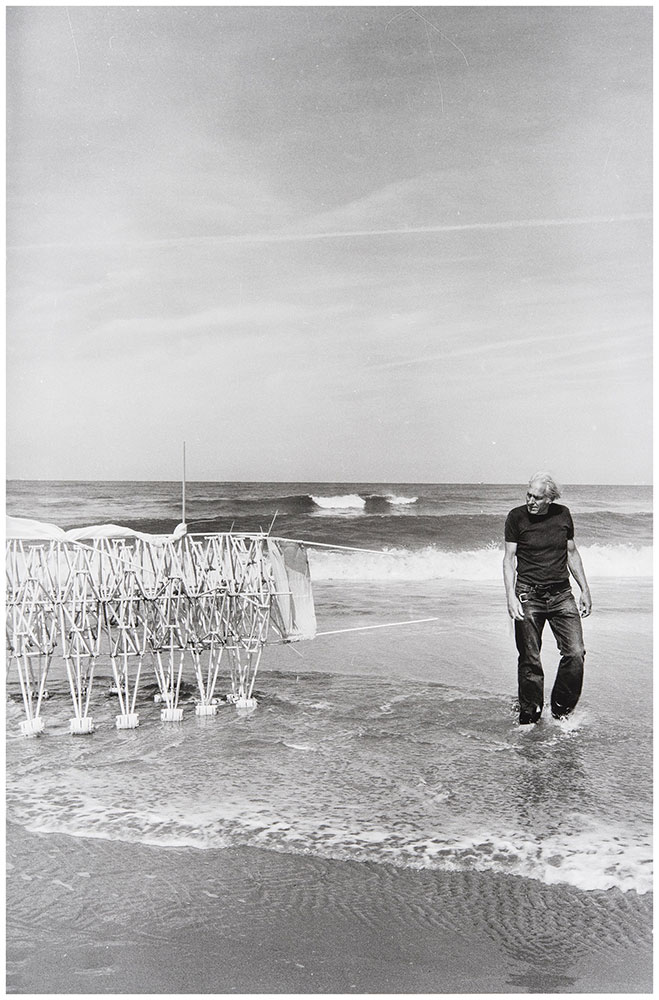 Impressive skeletal structures that move independently, powered by the wind: artist strandbeesten, or beach animals by Theo Jansen, can regularly be seen wandering along the Dutch coast. In the exhibition at “Strandbeests: The New Generation” at Kunstmuseum Den Haag the viewers have an opportunity to get to know Jansen’s work better, Displaying ten strandbeests outside also in the Projects Gallery, where they can learn more about Jansen’s vision, techniques, background and process. Strandbeests are more than simply art objects. Jansen tries to create actual life, with the ultimate goal of releasing his creations to live an independent life in large herds on the beach. He realises this will not be possible in the near future, but he explained his dream a few years ago in an interview with National Geographic: “Give me a few million years and my strandbeests will live completely independently”. Over the past few decades Jansen has continually developed the creatures, gradually making them more independent. Info: Kunstmuseum Den Haag, Stadhouderslaan 41, Den Haag, the Netherlands, Duration: 26/2-3/7/202, Days & Hours: Tue-Sun 11:00-19:00, www.kunstmuseum.nl
Impressive skeletal structures that move independently, powered by the wind: artist strandbeesten, or beach animals by Theo Jansen, can regularly be seen wandering along the Dutch coast. In the exhibition at “Strandbeests: The New Generation” at Kunstmuseum Den Haag the viewers have an opportunity to get to know Jansen’s work better, Displaying ten strandbeests outside also in the Projects Gallery, where they can learn more about Jansen’s vision, techniques, background and process. Strandbeests are more than simply art objects. Jansen tries to create actual life, with the ultimate goal of releasing his creations to live an independent life in large herds on the beach. He realises this will not be possible in the near future, but he explained his dream a few years ago in an interview with National Geographic: “Give me a few million years and my strandbeests will live completely independently”. Over the past few decades Jansen has continually developed the creatures, gradually making them more independent. Info: Kunstmuseum Den Haag, Stadhouderslaan 41, Den Haag, the Netherlands, Duration: 26/2-3/7/202, Days & Hours: Tue-Sun 11:00-19:00, www.kunstmuseum.nl
